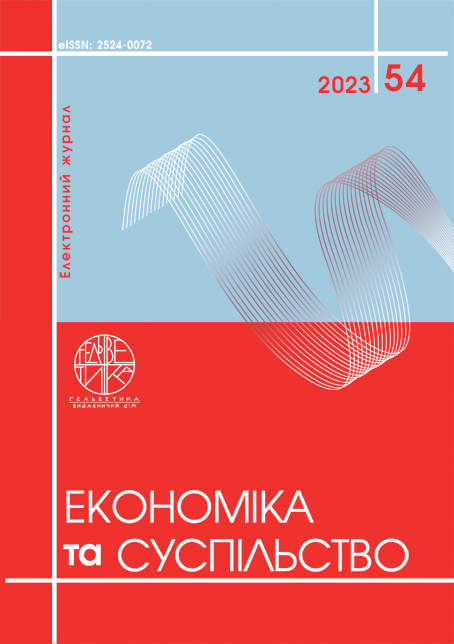АНАЛІЗ ПРОБЛЕМАТИКИ ОРГАНІЗАЦІЇ ТРАНСПОРТНИХ ПЕРЕВЕЗЕНЬ МОЛОЧНОЇ СИРОВИНИ
Анотація
Роль транспорту у виробництві молочної продукції з кожним роком зростає, Без транспортного сполучення не можливо побудувати ланцюги постачання, як необробленого так і переробленого молока. Таким чином, створюються потужні транспортно-логістичні системи, якими необхідно керувати в оперативному режимі. Особливо гостро постає завдання управління такими системами в молочній промисловості, оскільки весь цикл від постачання сировини до виробництва, а потім реалізації продукції має обмежений період часу. Крім цього, при розробці схеми доставки сировини та реалізації готової продукції враховуються фізикохімічні властивості молока та інших компонентів, їх температурний режим перевезення, нерівномірність поставок сировини та готової продукції в часі та інших факторів. завданням логістики є забезпечення на державному рівні ефективного виконання усіх складових єдиного транспортнотехнологічного «ланцюжка» від виробника молочної сировини до кінцевого споживача готової продукції. Розвиток логістики сприяє досягненню конкурентних переваг як у виробництві – через раціональне використання наявних потужностей, скорочення виробничих запасів, кооперацію, інтеграцію тощо, так і у розподілі – завдяки вдосконаленню торговельного обслуговування, вибору оптимального каналу розподілу, більш повному задоволенню потреб.
Посилання
Meyer А. Milk run Design. Definitions, Concepts and Solution approaches. Dissertation, Karlsruher institut fur technologie (Kit). 2015. 257 p.
Boysen N., Emde S., Hoeck M., Kauderer M. Part logistics in the automotive industry: Decision problems, literature review and research agenda. European Journal of Operational Research. 2015. Vol. 242(1). рр. 107¬120.
Miemczyk J., Holweg M. Building cars to customer order - what does it mean for inbound logistics operations? Journal of Business Logistics. 2004. Vol. 25(2). рр. 171¬197.
Krajewska M.A. Potentials for e-ciency increase in modern freight forwarding. Dissertation Universität Bremen: Gabler-Verlag. 2008. 139 p.
Kempkes J.P., Koberstein A., Suhl L. A resource based mixed integer modelling approach for integrated operational logistics planning. Advanced Manufacturing and Sustainable Logistics. 2010. рр. 281¬294.
Quelin B., Duhamel F. Bringing together strategic outsourcing and corporate strategy: Outsourcing motives and risks. European management journal. 2003. Vol. 21(5). рр. 647¬661.
Hsiao H., Kemp R.G., Van der Vorst J., Omta S. A classification of logistic outsourcing levels and their impact on service performance: Evidence from the food processing industry. International Journal of Production Economics. 2010. Vol. 124 (1). рр. 75¬86.
Heckmann I. Towards Supply Chain Risk Analytics-Fundamentals, Simulation, Optimization. Karlsruher Institut fur Technologie: Springer Gabler. 2016. 436 p.
Smith M.E., Buddress L. Supply chain management: borrowing our way to a discipline. International Journal of Services and Operations Management. 2005. Vol. 1(4). рр. 305¬319.
Bertodo R. Some developing trends in manufacturer-supplier relationships. International Journal of Manufacturing Technology and Management. 2002. Vol. 4 (1–2). рр. 21¬35.
Meyer A. (2015). Milk run Design. Definitions, Concepts and Solution approaches. Dissertation, Karlsruher institut fur technologie (Kit).
Boysen N., Emde S., Hoeck M., Kauderer M. (2015). Part logistics in the automotive industry: Decision problems, literature review and research agenda. European Journal of Operational Research. Vol. 242(1). рр. 107¬120.
Miemczyk J., Holweg M. (2004). Building cars to customer order - what does it mean for inbound logistics operations? Journal of Business Logistics. Vol. 25(2). рр. 171¬197.
Krajewska M.A. (2008). Potentials for e-ciency increase in modern freight forwarding. Dissertation Universität Bremen: Gabler-Verlag.
Kempkes J.P., Koberstein A., Suhl L. (2010). A resource based mixed integer modelling approach for integrated operational logistics planning. Advanced Manufacturing and Sustainable Logistics. рр. 281¬294.
Quelin B., Duhamel F. (2003). Bringing together strategic outsourcing and corporate strategy: Outsourcing motives and risks. European management journal. Vol. 21(5). рр. 647¬661
Hsiao H., Kemp R.G., Van der Vorst J., Omta S. (2010). A classification of logistic outsourcing levels and their impact on service performance: Evidence from the food processing industry. International Journal of Production Economics. Vol. 124 (1). рр. 75¬86
Heckmann I. (2016). Towards Supply Chain Risk Analytics-Fundamentals, Simulation, Optimization. Karlsruher Institut fur Technologie: Springer Gabler.
Smith M.E., Buddress L. (2005). Supply chain management: borrowing our way to a discipline. International Journal of Services and Operations Management. Vol. 1(4). рр. 305¬319.
Bertodo R. (2002). Some developing trends in manufacturer-supplier relationships. International Journal of Manufacturing Technology and Management. Vol. 4 (1–2). рр. 21¬35.

Ця робота ліцензується відповідно до Creative Commons Attribution 4.0 International License.


